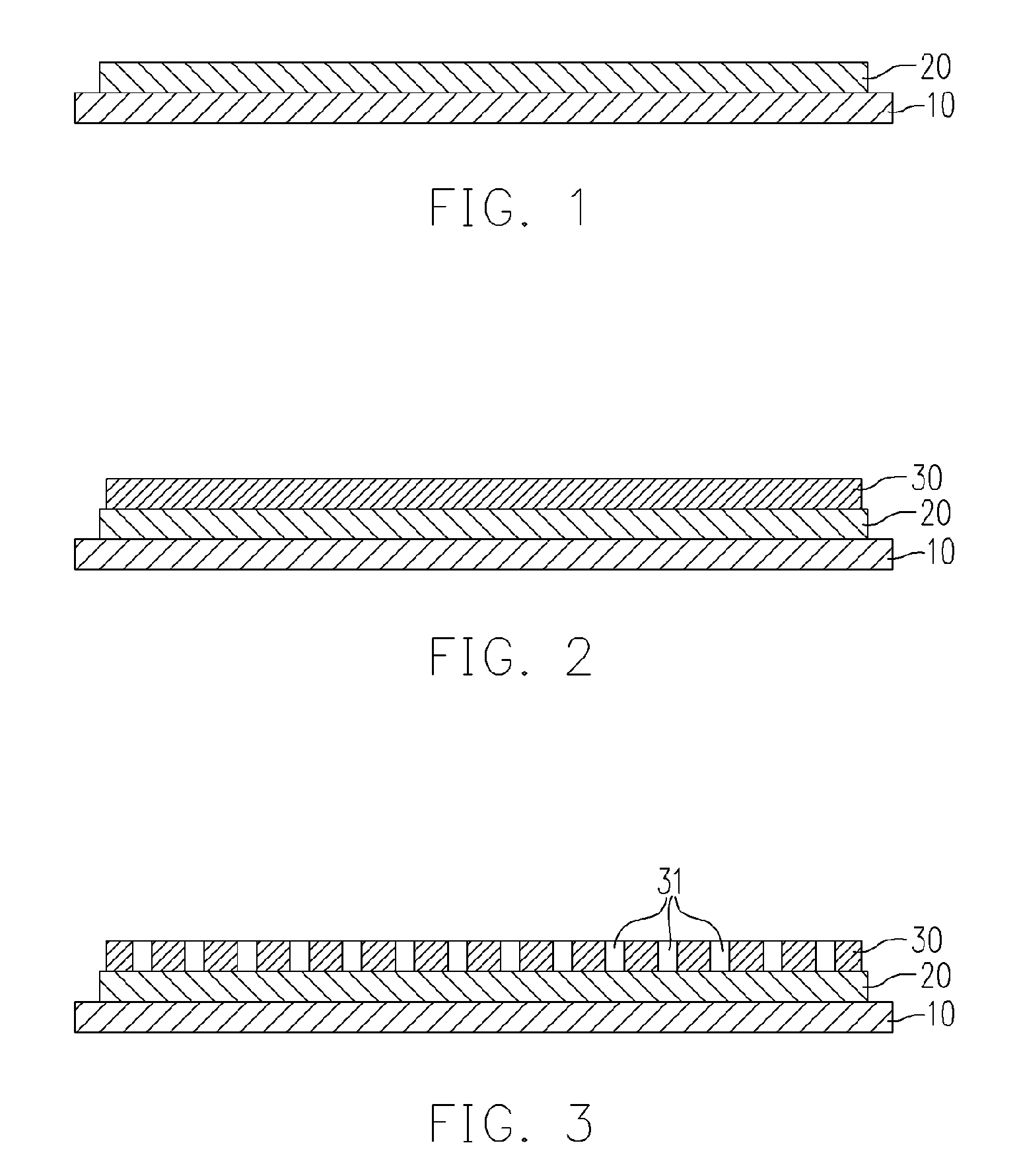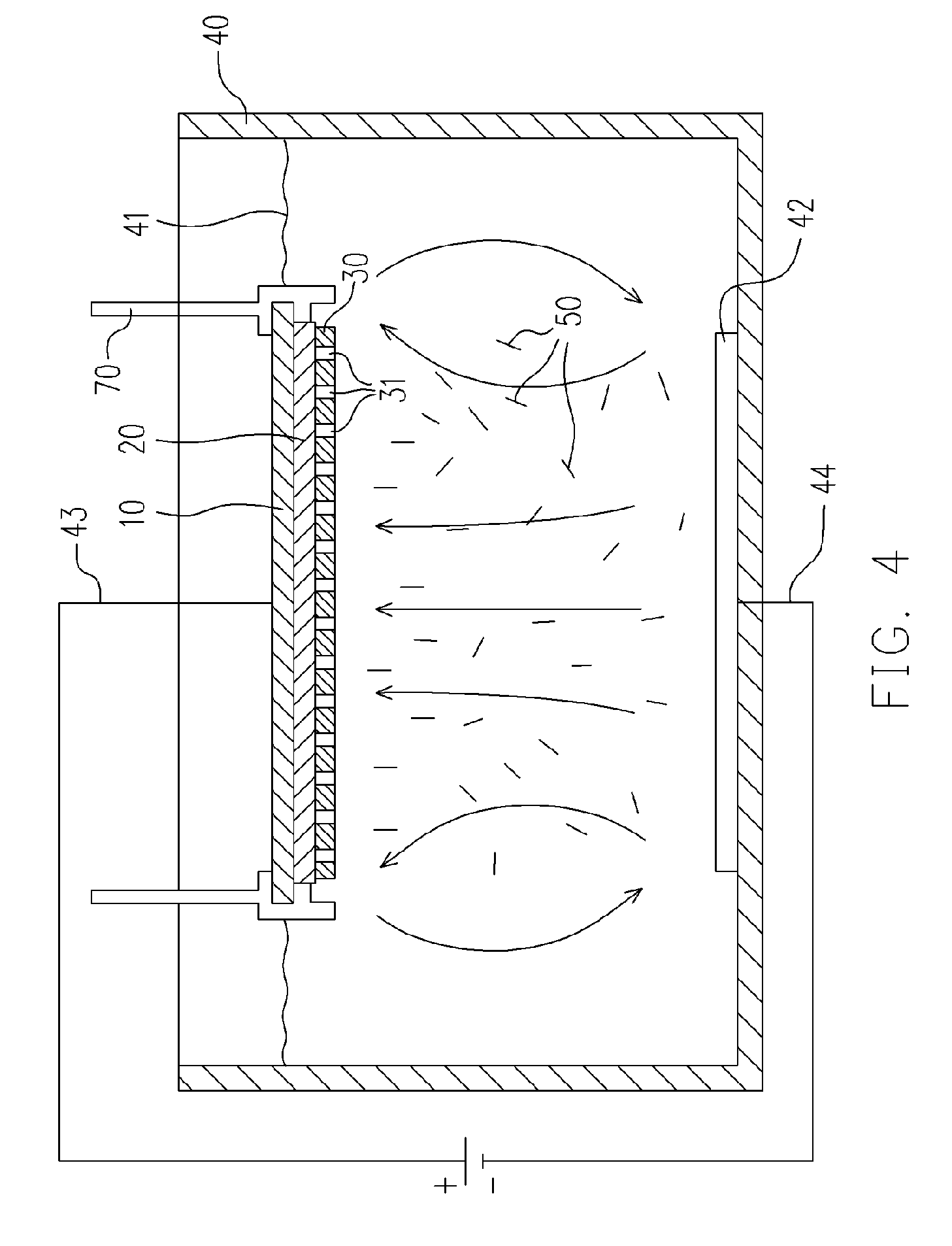Carbon-nanotube cold cathode and method for fabricating the same
a carbon-nanotube and cold cathode technology, applied in the manufacture of discharge tubes/lamps, electrode systems, discharge tube main electrodes, etc., can solve the problems of poor electron emission efficiency, reducing the lifetime of fed, and restricting the dimensions of fed correspondingly, and achieve high electron emission efficiency
- Summary
- Abstract
- Description
- Claims
- Application Information
AI Technical Summary
Benefits of technology
Problems solved by technology
Method used
Image
Examples
Embodiment Construction
[0015] Referring to FIG. 1, a plate-like cathode substrate 10 is provided, which is a glass substrate, a silicon-based substrate or an aluminum oxide substrate, for example. A conductive layer 20 is then deposited on the cathode substrate 10 through evaporation deposition or sputtering deposition. The material of the conductive layer 20 is, for example, TiN or Ti.
[0016] Referring to FIG. 2, a metal film 30 is selectively formed on the conductive layer 20 through, for example, evaporation deposition or sputtering deposition. The thickness of the metal film 30 is smaller than the length of the carbon nanotubes that will be deposited latter, and the material of the metal film 30 may be aluminum, for example.
[0017] Referring to FIG. 3, an anodization treatment is done to the metal film 30 to form numerous nanopores 31 through the metal film 30. The nanopores 31 are formed uniformly and have a diameter from about 5 nm to 500 nm. The distribution density and the diameter of the nanopore...
PUM
| Property | Measurement | Unit |
|---|---|---|
| diameter | aaaaa | aaaaa |
| weight ratio | aaaaa | aaaaa |
| voltage | aaaaa | aaaaa |
Abstract
Description
Claims
Application Information
 Login to View More
Login to View More - R&D
- Intellectual Property
- Life Sciences
- Materials
- Tech Scout
- Unparalleled Data Quality
- Higher Quality Content
- 60% Fewer Hallucinations
Browse by: Latest US Patents, China's latest patents, Technical Efficacy Thesaurus, Application Domain, Technology Topic, Popular Technical Reports.
© 2025 PatSnap. All rights reserved.Legal|Privacy policy|Modern Slavery Act Transparency Statement|Sitemap|About US| Contact US: help@patsnap.com



